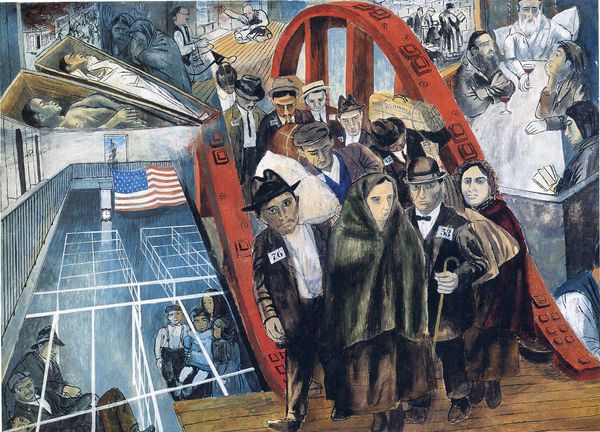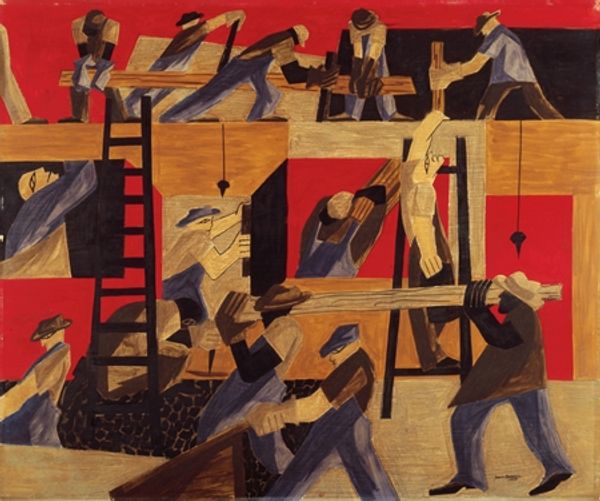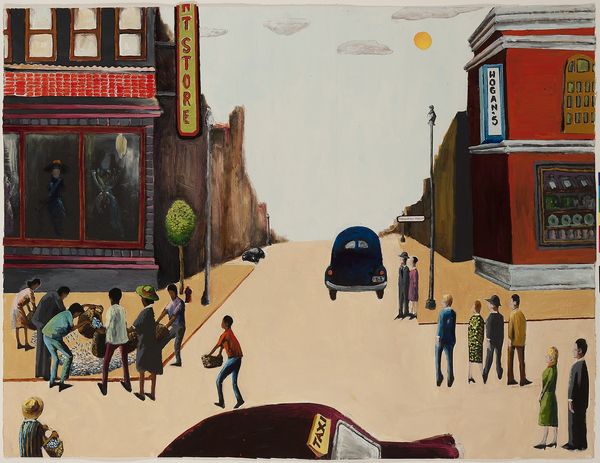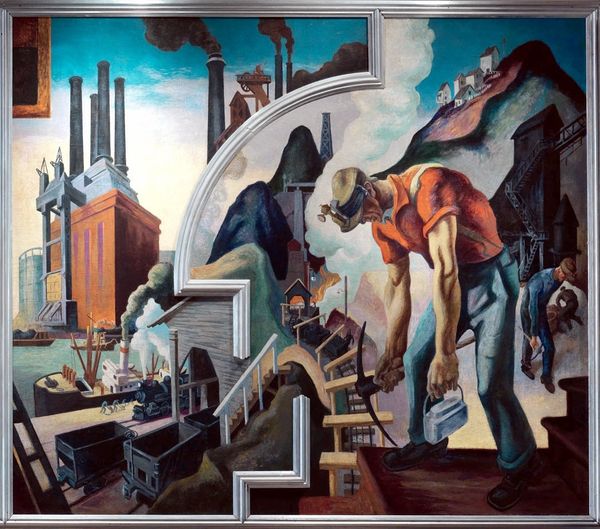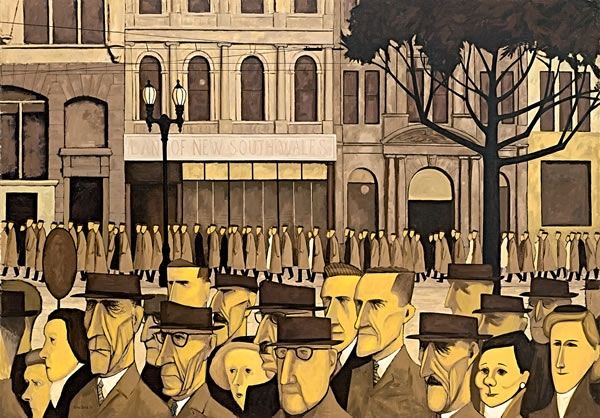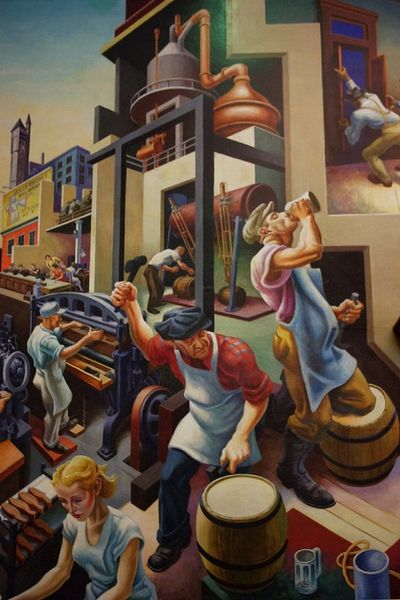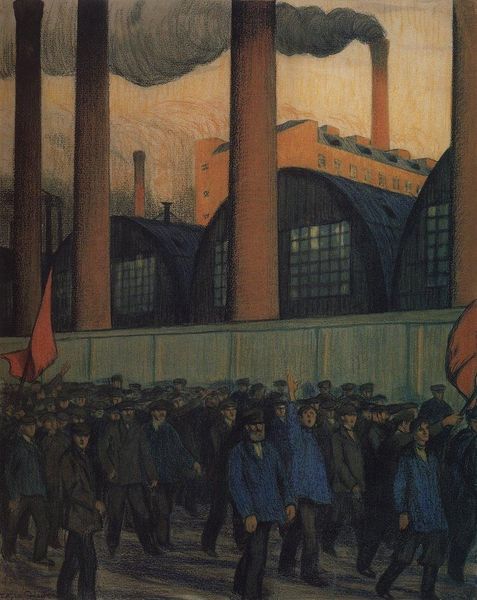
tempera, painting, mural
narrative-art
tempera
painting
perspective
soviet-nonconformist-art
socialist-realism
figuration
cityscape
history-painting
mural
realism
Editor: Here we have Aleksandr Deyneka's "Who will defeat whom", created in 1932 using tempera. The overall composition feels incredibly complex, with seemingly disparate scenes layered upon each other. It almost feels like looking at different moments in time collapsing into one. What stands out to you most in this piece? Curator: The layered scenes are certainly striking. Looking through a historical lens, this reflects the Soviet project's ambition to rapidly compress historical stages, leaping into a utopian future. Notice how he juxtaposes the idealized workers with scenes referencing the past revolutions. Consider the running figures above. Do they strike you as celebrating victory, or warning of an ongoing struggle? Editor: I see your point; the figures could be interpreted either way. It's fascinating how Deyneka blends revolutionary fervor with these glimpses of everyday Soviet life—the new apartment buildings, the trains... Was this typical of socialist realism at the time? Curator: That's where Deyneka complicates things. Socialist Realism often aimed for clarity and unambiguous messages of progress. Deyneka, however, incorporates elements that create a sense of tension. He presents progress alongside a continued sense of struggle and the constant threat of opposition, reflecting a certain cultural anxiety that was emerging in the 1930s with the rise of Stalinism. Is this artwork reinforcing a national story or inviting people to become engaged? Editor: So it’s not a straightforward piece of propaganda. The ambivalence makes it much more compelling and it challenges our assumptions about art made during that period. It is almost more of a reflection about a culture trying to define itself. Curator: Exactly! It demonstrates how even within a politically charged artistic landscape, artists like Deyneka could subtly negotiate and convey complex meanings. Looking at "Who Will Defeat Whom", one grasps a deeper understanding of that era’s social and cultural tensions.
Comments
No comments
Be the first to comment and join the conversation on the ultimate creative platform.
